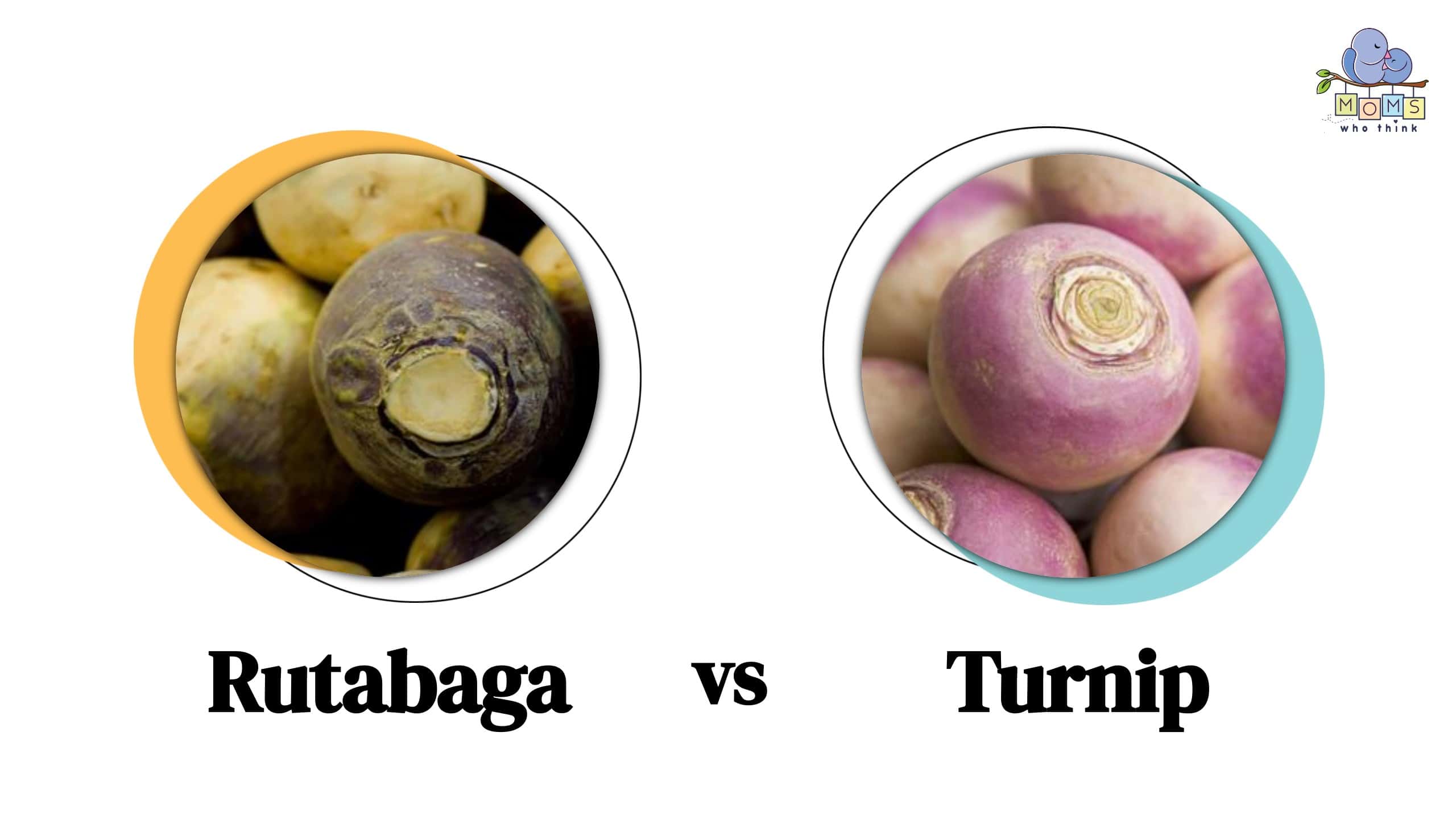The onset of Autumn means it’s time for apple picking, cider sipping, and of course, soups, stews, and hearty, roasted vegetable dishes. You might head straight for the potatoes or squash, but have you thought about switching it up with some rutabaga or turnips?
Rutabagas and turnips are both root veggies chock full of nutrients. They can sometimes be difficult to tell apart but you’ll want to know for sure which one you’re buying because they have a lot of differences! Below, find out what you need to know when it comes to rutabaga vs. turnip.
What is a Rutabaga?
Rutabaga is also called Swedish turnip, or swede. Why? Because “rutabaga” comes from the Swedish dialectical word rotbagge, meaning root (rot) and lump (bagge). Rutabaga is said to have been introduced to Scotland by the King of Sweden, who was a satisfied customer of a Scottish banker and gave the man a gift that included rutabaga seeds. The rest is history!
Many consider rutabagas to be a cross between turnips and wild cabbage. They are root vegetables which means the part we eat actually grows underground. Other root vegetables include potatoes, onions, carrots, and of course, turnips. Interestingly enough, rutabagas also belong to the cruciferous vegetable family, which includes broccoli, cauliflower, and brussels sprouts. That’s because vegetables are classified based on which part of the plant is eaten — root, stem, leaf, or flower. So rutabagas have the root which can be eaten, as well as the stems, which can be eaten, too.
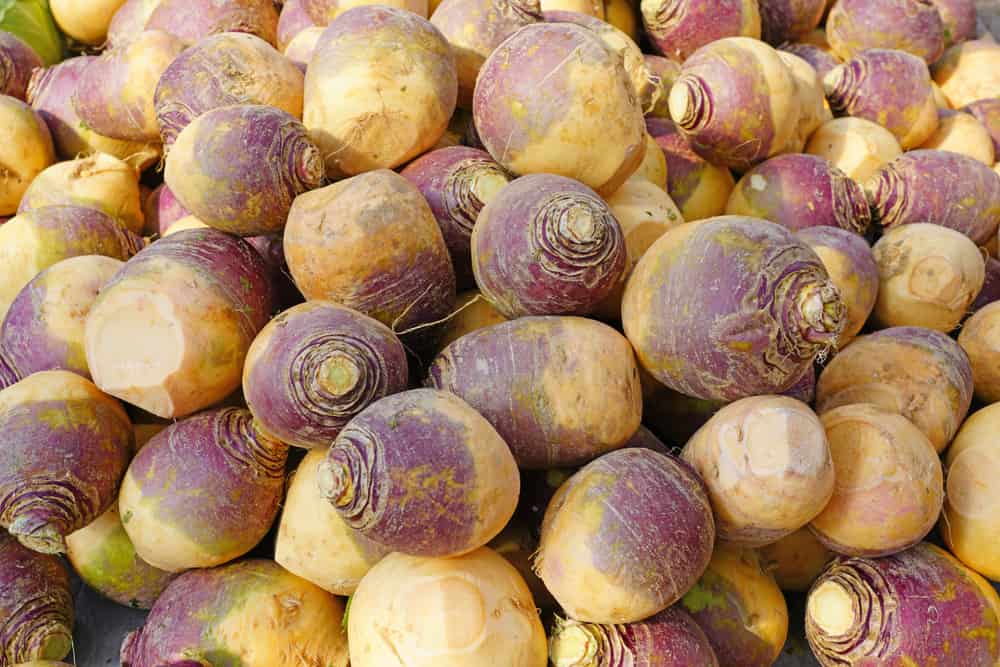
©EQRoy/Shutterstock.com
What is a Turnip?
Turnips are similar in classification to rutabagas. They belong to the same family, Brassica, but to a different species, rapa. Another root vegetable, the part of the turnip that grows underground can be cooked and prepared similarly to rutabagas. Since they are more bitter in taste, turnips are also served sliced and raw or pickled in salads. Turnip leaves can be cooked and eaten as well.
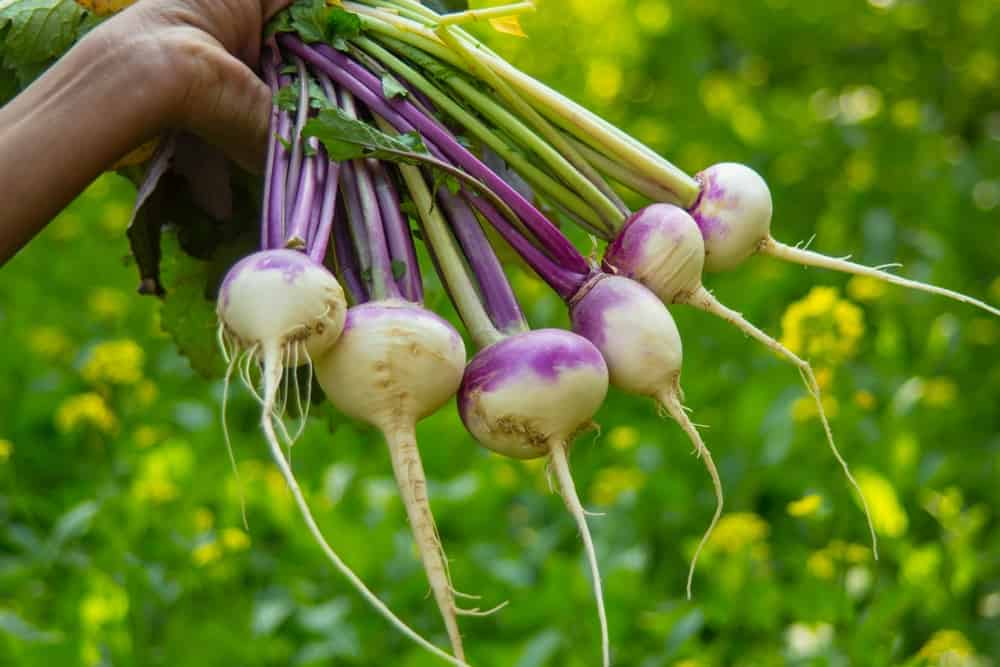
©Lahore Qalandars7/Shutterstock.com
Rutabaga vs. Turnip: What are the Main Differences?
Appearance
The main way you’ll be able to tell apart rutabaga from a turnip is that rutabagas are much bigger than turnips. Typically, a rutabaga is almost twice the size of a turnip.
Rutabagas’ color is typically anywhere from white to yellowish-brown, while turnips often have some purple tone to their skin. Sometimes rutabagas also have this purple coloring, though, so that way of differentiating is not always foolproof. The best way to tell them apart is by judging their size.
Taste
Rutabagas and turnips have similar tastes but they have their nuances, especially for the discerning palette.
Turnips are slightly more bitter than rutabagas and another root vegetable, potatoes. They often look the same as potatoes when boiled and mashed, but you’ll definitely be able to taste the difference between the two. Peeling the turnip generously before boiling and mashing it will decrease the bitterness of the flavor.
You can also eat turnip greens if you’re buying from a farmer’s market where the greens are still attached to the root. These are described as tasting similar to mustard greens when cooked.
Rutabagas, when cooked, have a sweeter flavor than turnips and even potatoes. The root actually turns to a lovely golden yellow color when cooked and can be a nice, healthier change-up from your regular mashed potatoes.
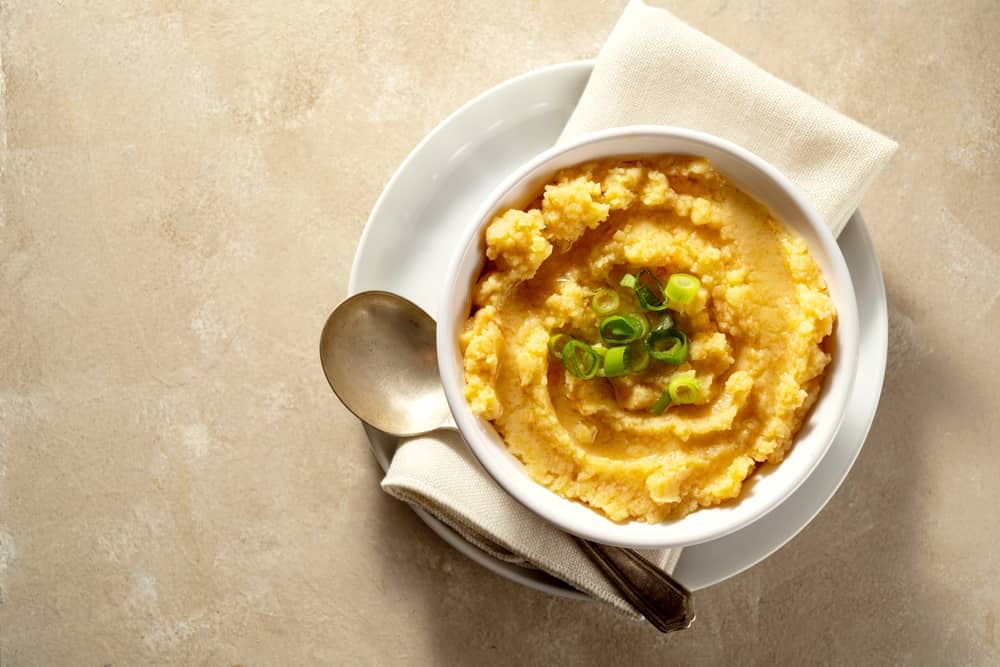
©Erhan Inga/Shutterstock.com
Rutabaga vs. Turnip: Which is Better for You?
Both root veggies are packed with nutrients, but rutabagas slightly edge out turnips in terms of most nutrition per 100 grams.
A rutabaga has 41% of your recommended Vitamin C intake in just 100 grams, whereas a turnip has 35% of your recommended daily value. Rutabagas also have more fiber, potassium, iron, magnesium, and less sodium, than turnips. Both are much more nutritious than potatoes but when comparing rutabagas to turnips, a rutabaga definitely packs slightly more nutrition in its punch.
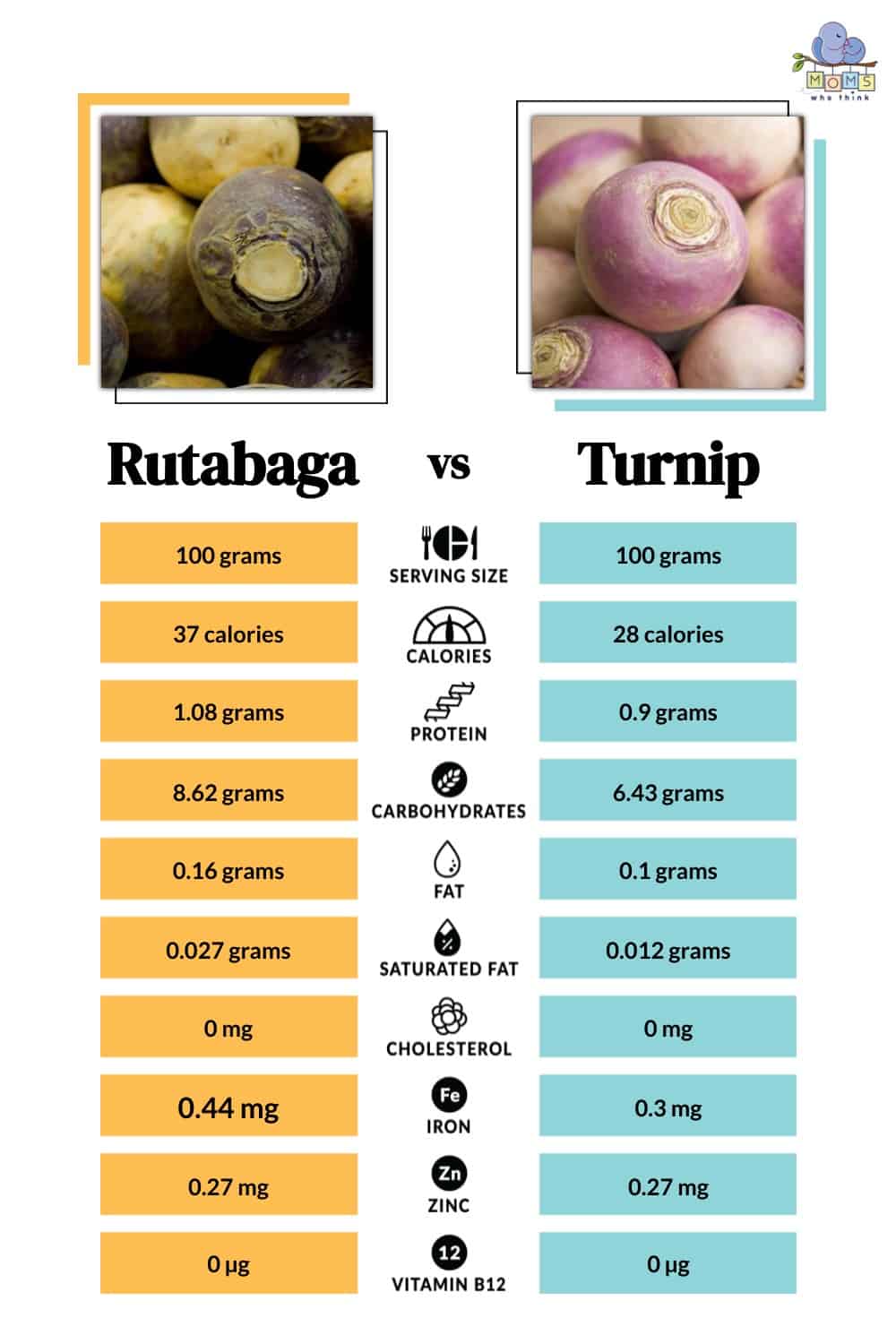
Can You Substitute Rutabaga for Turnip?
Since rutabagas and turnips are both root vegetables, you can definitely substitute one for the other. However, you should expect slightly different flavors based on which one you’re using. Turnips have a more peppery, bitter flavor than rutabagas, even when cooked. If you’re making something like a stew or mixed roasted veggies, where you’ll add other ingredients and spices, you can definitely substitute turnip for rutabagas.
If, however, you’re looking for a sweeter, mashed side to go with your dinner, turnips will not be a great substitution for rutabaga.
Rutabaga Vs. Turnip: Final Thoughts
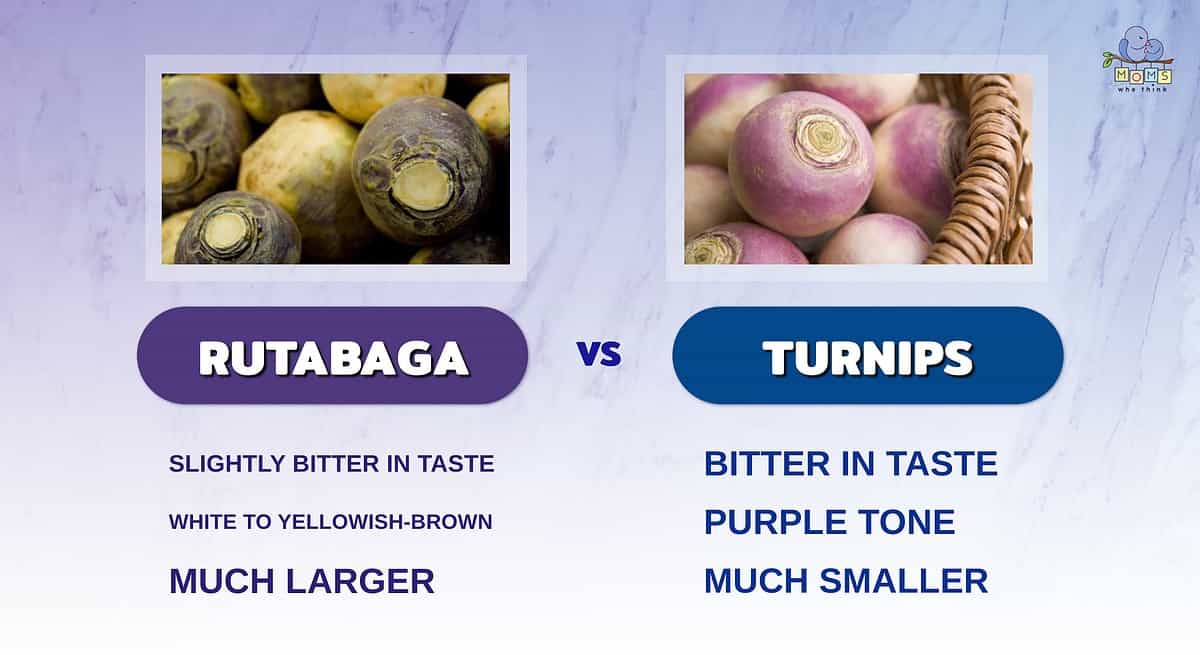
Rutabagas and turnips are quite similar. They are both root vegetables and have a similar taste. However, there are a few differences.
- The stems and roots of the rutabaga can be eaten.
- Only the root of a turnip is eaten.
- Rutabagas are much larger than turnips.
- Rutabagas are white to yellowish-brown in color.
- Turnips are purple in color.
Recipe Ideas for Rutabagas or Turnips
- Rutabaga and Carrot Puree: A warm, tasty side dish packed with all the best nutrients.
- Turnip Gratin: A hearty, cheesy casserole dish that’s loaded with flavor and nutrients.
- Beef Sirloin with Fall Vegetables: A super hearty meal, where you can substitute rutabagas for turnips if you’re looking for a sweeter root veggie complement.
- Bread and Oyster Stuffing: This recipe doesn’t explicitly call for rutabagas or turnips, but if you’re looking to pack some extra nutrition into a tasty stuffing dish, either root vegetable would work really well with these flavors.
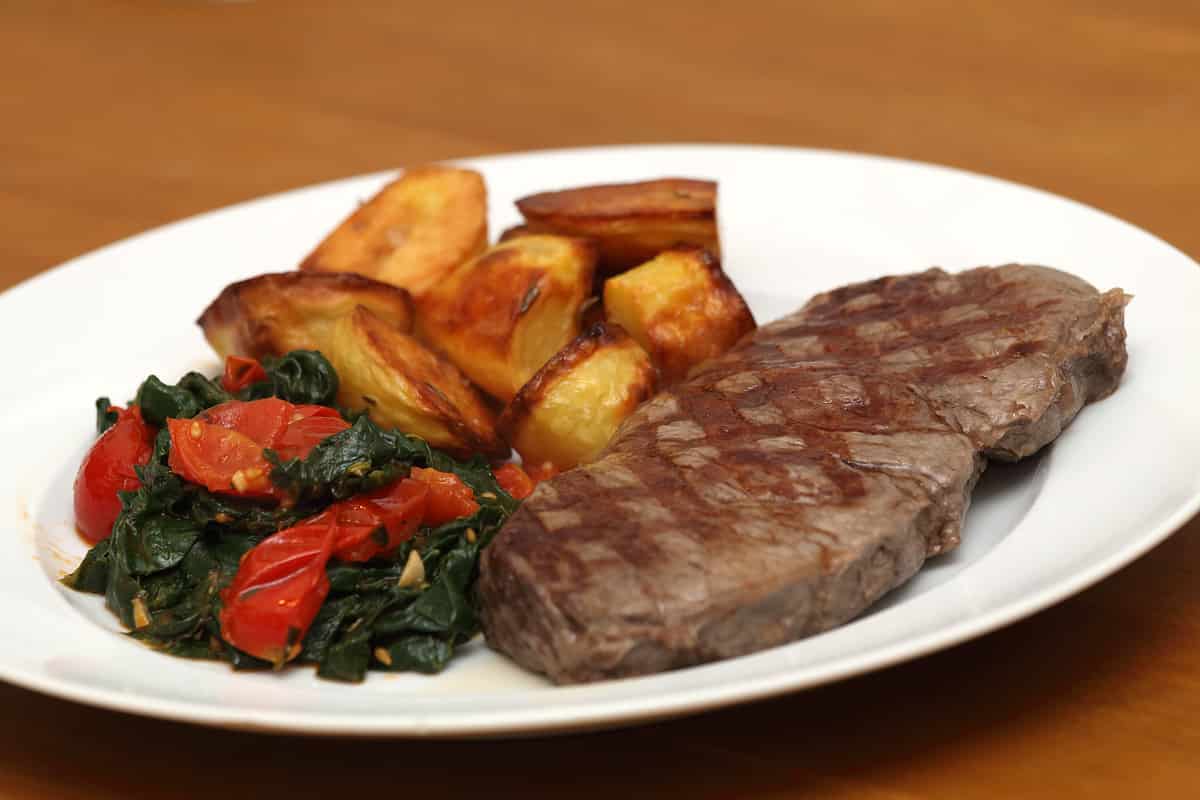
©iStock.com/donstock
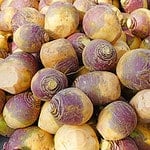
Rutabaga and Carrot Puree
Ingredients
- 2 rutabagas (about 2 1/2 pounds), peeled and cut into 1-inch pieces
- 5 carrots, cut into 1-inch pieces
- 3 tablespoons unsalted butter
- 3 tablespoons packed light brown sugar
- 1 teaspoon kosher salt
Instructions
- Cook rutabagas and carrots in boiling salt water to cover by 1 inch in a large pot until tender, about 30 minutes.
- Transfer vegetables with a slotted spoon to a food processor and puree with butter, brown sugar, and salt until very smooth. If necessary, transfer puree back to pot and reheat.
